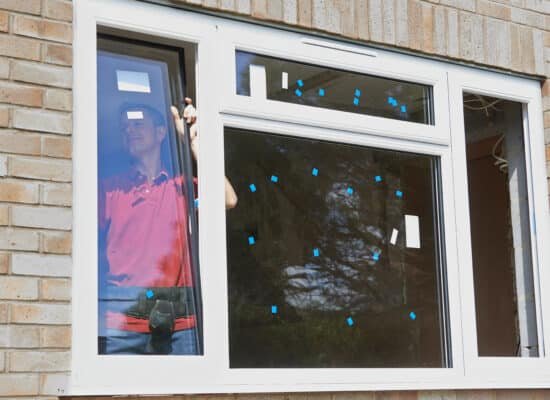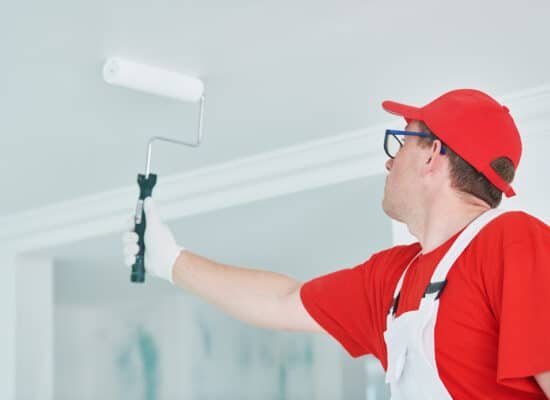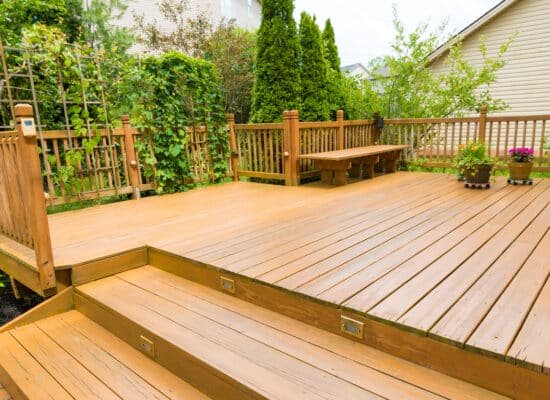In this guide, I will show you some tips on how you can soundproof the basement ceiling.
Table Of Content
- Basement Ceiling Soundproofing Made Easy and Affordable
- The Types of Sound
- Airborne Sound
- The Impact
- Ways to Soundproof Basement Ceiling
- #1/9 – Seal the Gaps
- #2/9 – Carpets and Rugs
- #3/9 – Green Glue
- #4/9 – Foam Tiles
- #5/9 – Acoustic Insulation
- #6/9 – Mass Loaded Vinyl
- #7/9 – Soundproof Drywall and Resilient Channels
- #8/9 – Soundproof Paint
- #9/9 – Rearranging Furniture
If you are like most people, you may be wondering why the need occurs to soundproof a basement. Aren’t they designed as storage space for wine, food, and water?
Basement Ceiling Soundproofing Made Easy and Affordable
Generally, the purpose of the underground space is to store old and unused items that no longer have a place in our house. However, it is also not uncommon to see people using the same storage room for home offices, play areas, theatres, libraries, and even a bedroom.
In short, it gives you an extra room in the house.
The only problem is the noise! Whether you experience sound from the floor above or it echoes from the basement room to the living spaces upstairs – the noises can be quite disturbing.
But the good thing is that there is a way to soundproof the basement ceilings – without spending a fortune.
How? Let’s find out!
The Types of Sound
Basically, you will experience two types of sound traveling back and forth between the basement ceilings: Airborne Noise and Impact.
Airborne Sound
Airborne noise is the expected sound that we hear daily. People talking, dogs barking, music from the stereo, or the newscaster on the TV are some examples of sound classified as airborne.
As the name suggests, the medium for the flow of airborne sound is ‘air.’ The sound waves travel through the air until they collide with a solid object, such as the floor, wall, or ceiling. The sound then travels past the solid object and into space.
The Impact
On the other hand, the impact results from something hitting a surface.
For example, the thumping that you hear when someone walks up the stairs is the impact noise. So is the sound a ball makes when it hits the floor.
To figure out the type of noise you are hearing, put your hand on the surface the sound is coming from. If you feel a vibration, then the sound is more likely to result from the impact. If you don’t, then it’s airborne.
Ways to Soundproof Basement Ceiling
Now that you know the type of sound you commonly hear through the basement ceiling, let’s talk about preventing the same sound from entering or exiting the area.
#1/9 – Seal the Gaps
One of the most fundamental rules of soundproofing any room is to ensure no gaps or cracks are present on the surface. And when it comes to basement ceilings, you are sure to find some gaps here and there that allow the sound to pass through. No amount of soundproofing will work if you decide not to seal the cracks in the ceiling.
To seal up the gaps, we recommend using acoustic caulking from a reputable brand. Most of them are available as polymers and efficiently reduce the vibrations caused by sound waves.
Weatherstripping is another option you can try. Cut the weather stripping according to the size of the area. Remove the adhesive backing and apply it to the place you want to seal.
#2/9 – Carpets and Rugs
One of the easiest and cheapest ways to soundproof the area is to place fluffy carpets on the floor above. The thicker and the denser the carpets are – the better soundproofing they will offer.
You can also use rubber floor mats in combination with the carpets. They are often thicker than standard carpets and have a better ability to absorb noise.
For improved results, place soundproof underlayment before laying carpets or rugs.
#3/9 – Green Glue
Green Glue is the most reliable noise sealant available in the market. It is a dampening material that converts sound energy into heat energy that eventually dissipates.
It is quite cheap and versatile – to be used in a number of soundproofing projects. However, we suggest applying it as a sealant between two layers of drywall to enhance the soundproofing protocol.
#4/9 – Foam Tiles
You can also use foam tiles – the type you see in recording studios or theatres to minimize noise transfer. These tiles are also helpful in reducing vibrations and echo within the room. So if you plan to use the basement as a home theatre or a music room, we suggest choosing acoustic foam tiles to improve the sound quality inside the room.
Installing acoustic foam tiles on the ceiling and walls is very convenient. Just apply glue to the back of the material or the surface and stick on the tiles. You can also use adhesive squares to stick the panels easily.
#5/9 – Acoustic Insulation
If you have a ceiling that doesn’t have drywall, acoustic insulation is something that you should definitely look into. This material insulates the joist cavities and makes a credible difference in the noise when compared to ordinary ceiling insulation.
Like other methods to soundproof the basement ceiling, the insulations can be easily installed without any special fasteners. All you have to do is cut the panels according to the joist’s size for a perfect fit.
Make sure not to tighten it too much around the wires. Keep it light. Also, keep an inch or two of space between the insulation and ceiling to leave air pockets.
#6/9 – Mass Loaded Vinyl
Mass-loaded vinyl (MLV) is a dense yet soft material that effectively reduces both – airborne and impact sound waves. The material can also be used on the walls and the basement ceiling to completely block out the sound.
If you have drywall installed, apply the MLV directly to the jolts. Make sure to measure and cut the MLV correctly according to space. Position it accurately and securely with the help of nails, screws, tacks, and Green Glue.
#7/9 – Soundproof Drywall and Resilient Channels
While ordinary material for drywall provides credible soundproofing, adding resilient channels will double the effect.
When building quiet rock drywall with wooden bars, the basic rule is to leave gaps between the ceiling and the material to disrupt the sound flow. The resilient channels offer an extra gap that ultimately helps block the sound completely.
#8/9 – Soundproof Paint
Interestingly, soundproof paint is also available in the market to reduce the transmission of sound from one room to another. Also known as acoustic paint, this component is much thicker than chronic pain – thus providing better protection from external noise.
In fact, several sources claim that the paint is capable of reducing the expected frequency sound up to 30 percent. However, remember that by standard frequency, we actually mean the noise made by people talking. For other (louder) sounds, the paint might not be as effective.
To achieve the best results, it is suggested to combine the paint with other soundproofing methods mentioned above.
#9/9 – Rearranging Furniture
Last and one of the cheapest ways to soundproof the basement ceiling is rearranging the room’s furniture above.
If possible, place heavy items like couches, bookshelves, and closets directly above the basement ceiling. The best practice is to note the areas that leak the most sound and placing the furniture there to reduce it.
But of course! Only move the furniture if you can keep it there permanently.
Final Thoughts
As you can see, there are many ways to soundproof the basement ceiling – without breaking the bank. And you can apply multiple methods at the same time as well to improve the ‘peacefulness’ of your new space.
Give these tips a try and let us know how they work for you.












